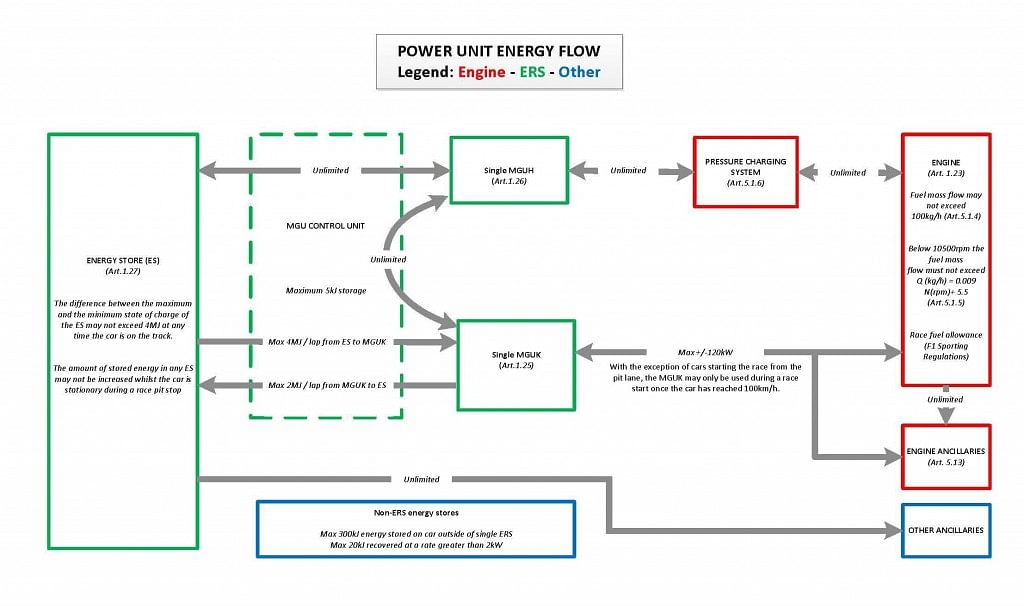Besides - higher rpm does not guarantee more waste heat in the exhaust. Higher rpm with same fuel flow and same AFR means same air flow and therefore less air/cycle therefore less boost and lower turbine PR (which is one of the most important factors in determining turbine power).stevesingo wrote: ↑25 Apr 2018, 10:54My question is, is the added friction from 10500 to 11500rpm greater than the power gained from MGU-H harvest at 100kg/hr as opposed to friction at 9500-10500 but having less fuel to burn and presumably less waste heat to harvest?gruntguru wrote: ↑25 Apr 2018, 06:44Energy harvested from the MGUH is more often sent direct to the MGUK for immediate consumption.stevesingo wrote: ↑23 Apr 2018, 09:44Thinking again about where PU peak power may sit.
At 10500rpm+ we can release the energy from 100kg of fuel.
The energy is used to turn the ICE crank and excess from this is harvested to drive the MGU-H and stored for use later.No more than we can at any other rpm. You only need to consider the total of crankshaft power plus MGUH power (AKA "self sustaining power"). This figure will peak somewhere slightly above 10,500 rpm. No advantage running higher rpm.So, the more we burn the more we can use and store, so it seems obvious that for peak performance, 10500+ is where the ICE needs to be.
Above 10500rpm we have increasing friction, so ICE output will fall an this would be detrimental to car performance, to the point where a higher gear and lower rpm (<10500) would produce more power.
Can we not massage MGU-K assist to equal out the friction losses of running over 10500rpm, whist still utilising H harvest when we are using the most fuel?
There may be a short term advantage running at a different rpm (or different operating point WRT ign timing, AFR, intake geometry, WG position, MGUH load etc) since the maximum that can be sent to the rear wheels is crankshaft power plus 120 kW MGUH. In other words the rpm for peak crankshaft power does not necessarily coincide with that for peak self-sustaining power.
In the long term however (eg not in traffic), you want to operate near peak self-sustaining output because that is where you get the maximum total energy per unit time (peak power) and also per unit fuel (peak efficiency)
Peak self sustaining output is entirely dependant on the relationship between ICE efficiency and MGU-H efficiency. Could there be a set of operating conditions where ICE efficiency could be sacrificed (such as running above 10500rpm) to enable better MGU Harvest?
Err, probably not. A 1% drop in ICE efficiency is 6kW. That would be what, 10% of MGU-H output?
- Login or Register
No account yet? Sign up



